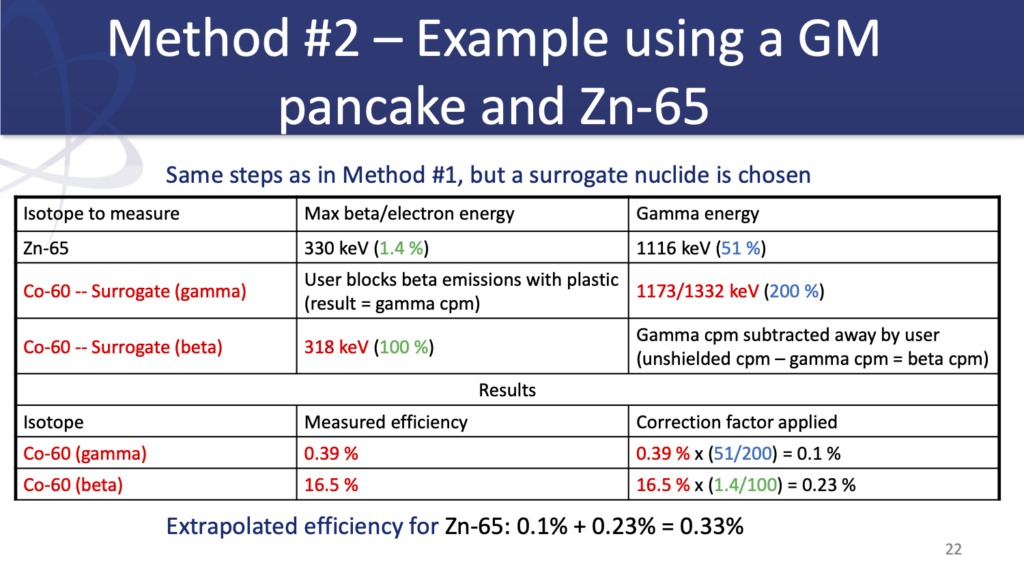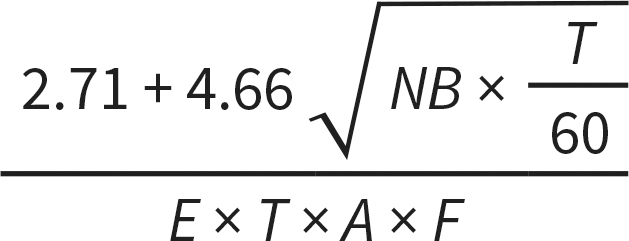Health Physics Corner, February 2024

Establishing Detection Efficiency for Surface Contamination Measurements: Verification Calculations and Examples
Welcome back to the Health Physics (HP) Corner! For years, this was a regular feature in the CRPA Bulletin. It drifted away in 2017, but we are very excited to see it resurrected by Jeff Sandeman.
The October issue of the Directorate of Nuclear Substance Regulation (DNSR) Digest asked, “Have you properly calibrated your contamination monitoring equipment?” A technical question like this seemed like the perfect opportunity for us to return to the Health Physics corner of the CRPA Bulletin.
In this first installment, Jeff carries on from the Canadian Nuclear Safety Commission (CNSC) licensee outreach presentation on contamination monitoring (Establishing Detection Efficiency for Surface contamination Measurements) and runs through some verification calculations and examples. If you haven’t seen the presentation yet, take an opportunity to watch it (available online in English and French) or look at the PowerPoint slides (English and French) before you dive into this HP Corner!
PART 1
Let’s take a look at the second method presented for establishing detection efficiency; specifically, the example where Co-60 is used as a surrogate to calculate the GM pancake efficiency for Zn-65. The extrapolated efficiency for Zn-65 is given as 0.33%.
Does this make sense and why?
Show Answer
If you wipe a lab surface area that is 100 cm2 and count the wipe for 10 minutes at a distance of 1 cm, and the background count rate is 30 CPM, is the minimum detectable activity (MDA) low enough to satisfy CNSC contamination detection requirements for Zn-65 in a controlled area? Show Answer
Alternatively, could the instrument be used for direct measurement of Zn-65 surface contamination, again at a distance of 1 cm and the same count time of 10 minutes over each area monitored? Show Answer
Jeff describes himself as “a grumpy old curmudgeon” who retired from Canadian Nuclear Safety Commission’s Accelerators and Class II Facilities Division in January 2021 after 17 years with the division. Prior to that, he spent 20 years at CancerCare Manitoba, the last few years of which he was the radiation safety officer for the radiation therapy facilities. Throughout both careers, he was blessed with opportunities to explore a very broad range of radiation-safety-related topics, including non-ionizing, diagnostic X-ray, nuclear medicine, medical radiotherapy, cyclotron isotope production, and even high-energy research accelerators. For some strange reason, both institutions also allowed him to teach on topics such as radiation protection fundamentals and radiation shielding design, and to mentor (corrupt) young staff. The highlight of his professional life came in 2020, when CRPA awarded him Richard V. Osborne Founders’ Award. Now that Jeff is retired, he spends most of his time attempting to golf (very badly), making sawdust in the basement (woodworking), or collecting dirty bits of paper (a.k.a. postage stamps). He loves single malt scotch whisky, of which he has far more bottles than his liver can possibly survive. He continues to dabble in radiation protection and has maintained his membership with CRPA (usually after 18 notices to renew, as he’s growing a bit forgetful in his old age). The Bulletin is published by the Canadian Radiation Protection Association (CRPA). It’s a must-read publication for radiation protection professionals in Canada. The editorial content delivers the insights, information, advice, and valuable solutions that radiation protection professionals need to stay at the forefront of their profession. Sign up today and we’ll send you an email each time a new edition goes live. In between issues, check back often for updates and new articles. Don’t miss an issue. Subscribe now!PART 2
PART 3
 Jeff Sandeman
Jeff SandemanDo you want to read more articles like this?






